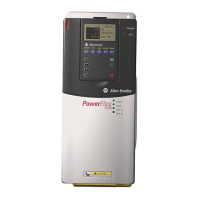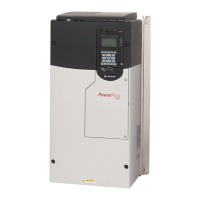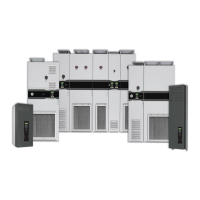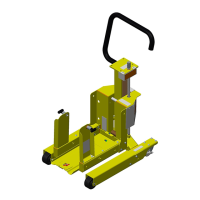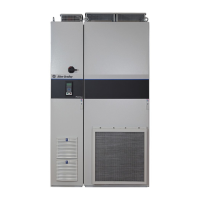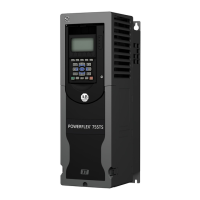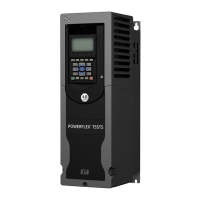Rockwell Automation Publication 7000L-UM301F-EN-P - March 2020 85
Drive Installation Chapter 2
To reduce the effects of signal distortion at the encoder receiving electronics, the
following guidelines should be considered:
1. Use a low capacitance cable. Purchase a cable that has a capacitance of
<120pf/m (40pf/ft). As an example Belden 1529A is an 18Awg 3pair
cable having a capacitance of 114pf/m (35pf/ft).
2. Use twisted pair cabling with a shield that covers 100% of the cable. This is
especially true in the case of quadrature encoders. It is still a better choice
for absolute encoders, although the data in these encoders will not exhibit
the same frequency spectrum as quadrature encoders and single wire
cabling can be used. In either case, always check with the encoder
manufacturer for the recommended cable.
3. Keep cable distances as short as is practically possible. Rockwell
Automation’s recommendation for cable distances are:
a. For the 20B-ENC encoders, the distance should be kept to a maximum
of 65m (200 ft). Longer cable distances could cause excessive surge
currents. The operating frequency of the encoder has no bearing on this
recommended distance due to AC Termination used. However, if the
frequency can be kept so that the cable's characteristic impedance is
around 348ohms, this will improve the surge currents and may increase
the maximum distance to 100m (330 ft).
b. For the Universal Encoder Interface, the distance can be extended out
to 200 m (650 ft) @ 100 Khz. This distance can be increased to 500m
at frequencies below 55 Khz. It is not recommended to exceed this
distance since the voltage drop across the cable could cause a lower than
expected power at the encoder.
Unused Inputs
Not all inputs, in either the quadrature or absolute encoders, may be necessary.
For example, the absolute encoder can accept a 12bit encoder but will work with
a lower resolution. Likewise, quadrature encoders may not utilize the Z track.
The following should be used for unused inputs:
1. 20B-ENC Board. Any unused input should be wired to the encoder power
rail. This also includes the B and B’ inputs if using a pulse encoder. Failure
to do this will result in phase loss warnings and improper operation of the
encoder feedback logic (i.e. missing counts).
2. Universal Encode Interface. When used as a quadrature encoder interface,
the same rule applies as for the 20B-ENC Board. When operating as an
absolute encoder interface, the wiring of unused inputs is dependent on
the position of the POL_QRDNT jumper. If the jumper is installed, then
wire all unused inputs to ENC PWR, otherwise use ENC COM.
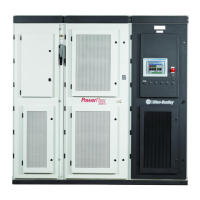
